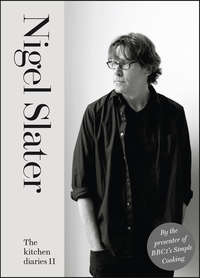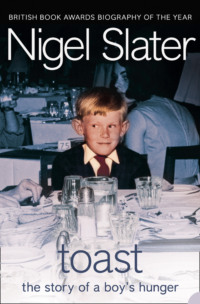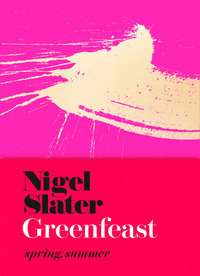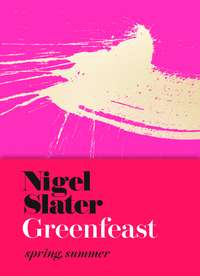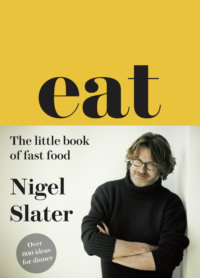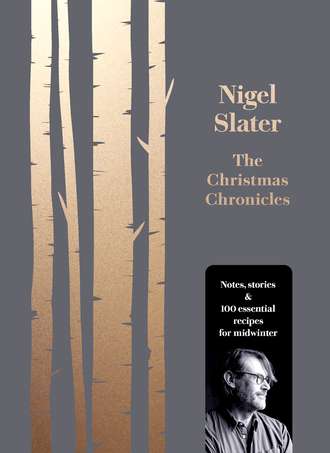
Полная версия
The Christmas Chronicles: Notes, stories & 100 essential recipes for midwinter
There were other candles too, including those which, once lit, sent tiny brass horses spinning round a pole, and others huddled in a bunch whose wax slowly welded together as they melted, achieving a glowing island. The candles disappeared from our Christmas under the instruction of my stepmother, who thought they were dirty things, producing smoke and dripping wax on her lovingly polished tables. A somewhat strange decree, coming, as it did, from a lifelong chain-smoker.
A candle is not just for Christmas. Turn the lights off on a winter’s night and light a candle or two instead. Instantly, the smell of cordite, and soon the scent of beeswax. Shadows to feed the imagination, flickers of flame, perhaps the scent of woodsmoke by which to read a book. None of this would I wish to live without. At home, we light them even during summer, though they tend to be in tall glass jars on the long garden table, lit as the night starts to fall.
Whale sperm and beeswax
The heart and soul of a candle is the wax from which it is made; it is what glows and produces a pillar of warm light in the room, but this hasn’t always been so. The fat from nuts and trees, from bay berries and even rice was used long before the introduction of wax. In the West it was tallow, basically rendered beef fat, which is softer than the wax we know today and gave off much dark, acrid smoke, rather like beef fat on a griddle. There is evidence that candle makers – chandlers – went from house to house, making saved beef fat into useable candles.
In the Middle Ages, we progressed to beeswax. Cleaner and with a warming, honeyed fragrance, they were more expensive to make and initially the preserve of the wealthy and of churches, where they were an integral part of religious ceremonies. Cheaper candles were made from spermaceti, a waxy substance obtained from the spermaceti organ found in the head of a sperm whale. Spermaceti candles, also known as standard candles, were the ones used for measuring candlepower, the unit, no longer used, that measures the luminous intensity of a candle. You can get 500 gallons of spermaceti from a large whale. Is this book useful or what?
Wax for candles is obtained from a variety of sources, stearin (purified animal fats), paraffin, cinnamon, soya and palm being among the most common, but the most valued is the traditional beeswax. Even unscented they are capable of creating, almost instantly, an atmosphere of calm, welcome and humble bonhomie.
The wick
The wick that lies at the heart of the candle is made of braided cotton or linen. Occasionally a stiffener, in the form of copper wire, is used. As the wick burns, the heat travels downwards, melting the wax that supports it. The wax vapours rise around the wick, catch light and burn, feeding the flame. The wax is fuel to the burning wick. The thicker the wick, the larger the flame. The liquid pool of wax around the wick is known to some as the bishop, though I have absolutely no idea why.
Trimming your wick
Candle wicks are treated to encourage them to burn more slowly. The wick should be kept trimmed – snip off any burned cotton with scissors before lighting. Too long a wick will encourage the candle to smoke. In some cases a long wick can collapse back into the wax. No one wants that. I often pinch the burned cotton between my fingers when I can’t be bothered to go and fetch the scissors. If my fingers aren’t covered in fountain pen ink, they are sporting smudges of candle soot.
A life lived by the light of a candle
This is an old house, and candlelight suits it. The wobbly walls, the floorboards that creak even when you are still, the draughts that seep from every window and door. Most rooms have a fireplace; three of them, including the kitchen, have two. The space comes alive when candles are lit, shadows are exaggerated, corners deepen, here and there walls show the outline of doors long blocked up. These rooms have stories to tell. In daylight or under electric lights, the house is like any other, a closed book.
At the table
Candlelight has the extraordinary ability to make any meal into a special occasion, even when it is simply a bowl of soup and some bread and cheese. The light it gives welcomes and warms, soothes and calms. Faces glow, details are accentuated. Our lines, scars and wrinkles are more beautiful than ever.
Scented candles for Christmas
Much as I appreciate the purity of an unscented beeswax candle, scented candles can be interesting. They can be charming or hideously overpowering, depending on the type of scent used.
Scents come in every possibility, from wet cloisters to toasted brioche, wax floorboards to freshly ironed linen, and every imaginable flower, leaf and spice. I have to hold my hands up here and admit that I may not be a food snob but I am most certainly a candle snob. Cheap scented candles are simply disgusting. They smell of air freshener. Here are a few I recommend for burning at Christmas. All are subtle, and I promise they are not going to make your house smell like a cheap gift shop or a massage parlour.
Carmelite by Cire Trudon
A favourite of mine, often to be found burning in my basement kitchen, and whose ‘wet’ scent seems appropriate for the old stone floors, low ceilings and rough white walls. A deeply peaceful scent, of mossy stone and water. Not for Christmas Day, but for quiet moments before everyone gets up. There are the faintest notes of orange and clove, with heart-notes of violet and cardamom. Or, as the creator puts it, ‘the black and white silhouettes of nuns, walking through the silence of a ritual mass’. Which is probably why it seems so appropriate in this house.
Spiritus Sancti by Cire Trudon
‘Splinters of crimson, gold and olibanum,’ says the creator, ‘under the nave of a cathedral, the jubilant choir and holy scents rise into the souls.’ There is magic in this scent, the perfect candle for Christmas Day. A fleeting note of incense too.
Santa Maria Novella
In 1221 Dominican friars built a monastery, just outside the city gate in Florence, and began to experiment with herbs grown in their gardens. Initially intended for the monastery’s infirmary, the pharmacy opened to the public in 1612, and the Dominicans officially started selling their ‘curative and ephemeral products’. To this day they sell their fragrances around the world. Their Melograno soap has been a permanent feature of my bathroom for many years. Their pale ivory Melograno candle is said to bring good luck and fortune for the coming year.
Ash by Perfumer H
A mixture of carde (a relative of the juniper plant), frankincense and amber. This is the candle I have burning pretty much permanently in my house on winter mornings. Understated, like the company that makes it, gentle and haunting, a scent as old as time.
Diptyque produce some fine fragances too, especially Ivy and Bay, both perfect for winter. And yes, they all cost a small fortune but let’s be honest, the ‘Christmas candles’ that smell of cinnamon and mulled wine are particularly unpleasant. I will walk a mile to save a penny, but when it comes to candles, I think we should go for broke.
Candle myths and tips
Storing
There is a candle shelf in the larder, next to my collection of balls of string. (I have string for every occasion, some as fine as cotton thread, and some for the garden that smell of tar. It’s a borderline obsession.) Like Christmas pudding, I buy candles one year for the next. I have been led to believe that the older and drier the wax, the longer they will burn. If you keep the lid on the box, the scent will not disappear for a good year or more. Aged candles seem to last longer. Candle experts disagree. This is distinct from curing, ageing a candle for a few weeks before it is first used, a process by which the wax and the perfume bond. Maybe I just like storing candles.
Bloom
Candles that have been in store sometimes develop a powdery coat, like a damson. This can be wiped off with a soft, dry cloth.
Burn rate
Look for candles with a long burn rate. It is usually marked on the box. This will tell you roughly how long a candle should burn for if burned continuously. Burning the candle in a draught will reduce its life.
A smoking candle
Occasionally a candle will produce plumes of black smoke. This is usually because the flame is being disturbed by a draught, causing the natural teardrop of light to distort and flicker. Rather appropriate if you happen to be reading a ghost story on a winter’s night. Annoying if not. Which is why candles on window ledges often burn less evenly than those on a table in the centre of a room.
Chilling your candles
I was brought up to believe that candles should be stored in the fridge, as a cold candle burns more slowly. Sadly, although based on truth, the wax warms so quickly once lit that the practice is somewhat pointless.
Incidentally, Fortnum & Mason department store, one of the capital’s prettiest Christmas sights, is, as Tom Parker Bowles says in The Cook Book, ‘a company built on spent wax’. William Fortnum, footman to Queen Anne, was allowed to keep the spent candles, which he then successfully sold on, before eventually teaming up with Mr Mason to open their eponymous Piccadilly store. Their selection of dinner candles remains dazzling to this day.
Roast cabbage with cheese sauce
Happy tweets and emails have been coming in today about my recipe for roast cabbage. There is something particularly heart-warming about this, especially as I wasn’t initially sure about the idea. I make it again, tonight, and sure enough, the readers are right, it is really good for a cold night. The Parmesan and old-fashioned sauce ensure its frugality goes unnoticed.
Serves 4
garlic – 2 cloves
olive oil – 2 tablespoons
lemon juice – 2 tablespoons
a small cabbage
Parmesan – 55g
milk – 500ml
bay leaves – 2
half an onion
butter – 30g
plain flour – 30g
bread, open-textured, such as ciabatta – a thick slice
smoked paprika – a pinch (optional)
sprouted seeds
Preheat the oven to 200°C/Gas 6. Peel the garlic and crush to a paste with a little salt. Put the paste into a small mixing bowl and stir in the olive oil and lemon juice. Season with a generous grinding of black pepper.
Slice the cabbage into discs about 3cm thick and place them, just touching, on a baking sheet. Spoon the garlic and lemon juice dressing over the cabbage and roast for twenty-five to thirty minutes. Turn the cabbage over, dust the top of each piece with a heaped tablespoon of grated Parmesan, and continue cooking for fifteen minutes.
While the cabbage cooks, bring the milk to the boil with the bay leaves and onion, then remove from the heat and leave to infuse. Melt the butter in a saucepan, stir in the flour and cook over a moderate heat for a couple of minutes. Add the milk, strained through a sieve, stir until smooth, then leave to simmer over a very low heat for fifteen minutes, barely bubbling, while the cabbage roasts. Tear the bread into small pieces and grill or fry until crisp, brushing or trickling them with a little oil as they cook.
Finely grate the remaining Parmesan into the sauce and season to taste with a little salt (you won’t need much), some black pepper and, if you like, a little smoked paprika. Lift the cooked cabbage on to plates, spoon over some of the cheese sauce, and finish with the fried bread and some green sprouted seeds.
15 NOVEMBER
Frost fairs and braised brisket
I ache for snow. The last generous fall in this garden was in January 2013, when the yew hedges tilted drunkenly with its weight. I ache for silence, for the sound of my own muffled footsteps as I walk up the garden path. But most of all I ache for icicles. When I was seven or eight, icicles hung from every gutter on the house. Long glass stalactites hung down from the greenhouse roof like trickles of icing on a gingerbread house. They shone in the late afternoon sun. I snapped off the longest as a rapier for a mock fight with an imaginary friend, and galloped across the snow-covered lawn in a one-man jousting match. Before I went in for tea the other icicles met their fate, as a unicorn’s horn, a fencer’s épée and lastly a shimmering javelin.
I remember a winter in Paris when the fountains froze. One close to my tiny attic room near the Sorbonne had set into a vast, sparkling ice sculpture that stopped me in my tracks on the treacherous walk to cooking school. How I would have loved to be in London for the frost fairs on the River Thames.
Frost fairs were held on the river on several occasions – the Thames froze over twenty-six times between 1408 and 1814. In 1536 King Henry VIII travelled along the river from London to Greenwich by sleigh. Queen Elizabeth I practised shooting on the ice in the winter of 1564, and carnivals were held on the frozen river. The first recorded frost fair was in 1608 but it was the last one, held in 1814, that saw an elephant led across the frozen river near Blackfriars Bridge, and stalls, shops and funfairs set up on the ice. There was bull-baiting and horse-racing, carousels and puppet shows, skating and football matches. The fair held in the winter of 1683–4 saw the Thames frozen over for two months, complete with a shopping street built on the eleven inches of ice.
The cold winters were far from one big carnival. The ice on the river thawed unexpectedly on several occasions and many drowned. In January 1789 the melting ice dragged a riverside public house into the water, crushing five people. The winters were unimaginably cold, animals and birds died, plants and trees froze solid, people choked on the smoke trapped by the cold air and the homeless froze to death.
There is little likelihood of the Thames ever freezing again. The river was shallower then and flowed more slowly, the winters were considerably colder and any idea of global warming inconceivable. Yet the notion of a vast frozen river on which one could skate, roast a whole pig and travel downstream on a sleigh is still something I dream of seeing. Just as I dream of climbing through the back of my wardrobe into a snow-covered wood.
No sign of snow yet, but I need something warming today. A dark braise of a favourite cut of beef.
Braised brisket with porcini and onion gravy
You’ll need a spoon. The broth surrounding the beef has been in the oven for four hours, along with a handful of caramelised shallots, black peppercorns, thyme sprigs and bay leaves. I could have used beef stock, but preferred to make a broth out of dried mushrooms. A dark-coloured, bosky liquor in which to coax a cheap cut of meat towards tenderness. The brisket was bargain enough, as you would expect from a cut situated at the front of the belly, a piece of meat that works hard throughout the animal’s life. I asked the butcher to leave the fat on my brisket in place, so that it would soften to a quivering mass and slowly enrich the gravy during its long sojourn in the oven.
I cut the meat into thick, wobbly slices and laid them in wide, shallow dishes, the sort you might use for pasta, then spooned the shiny, mahogany-coloured broth round the meat. There was a temptation to add soft, pale dollops of creamed parsnips or mashed butter beans, but instead I voted for swede, mashing it to a cream with a ridiculous quantity of butter and black pepper. Ideally, there would have been a thick fog outside, or better still a howling storm crashing at the windows. But you can’t have everything.
What we did have was enough silky brown meat for the next day, which I pulled into jagged strips and tossed with vinegar-crisped cabbage, finely shredded kale (yes, that again) and some sprouted radish seeds from the wholefood shop. I dressed it with a cool dill and mustard-seed-flecked cream dressing. If you want a quick fix, eat an expensive cut of meat, but if you crave homely warmth and bonhomie, the feeling that all is well with our world (especially when it isn’t), it’s the cheap, fat-rich cuts you should head for. The ones that enrich their cooking liquor to a point where you can feel the goodness seeping through to your soul with every mouthful. You’re going to need that spoon.
The dried porcini will add about three quid to the cost of this dish, but you get a lot of flavour for your money.
Serves 6–8
dried porcini – 25g
beef brisket, rolled and tied – 1.5kg
banana shallots – 6
small carrots – 350g
black peppercorns – 12
bay leaves – 4
thyme sprigs – 6
mashed swede, to serve (see here)
Put the kettle on. Set the oven at 230°C/Gas 9. Put the dried porcini into a heatproof bowl, then pour boiling water over them, cover with a plate and leave to soak for twenty-five minutes. This will give you a deeply flavourful broth.
Place the rolled and tied brisket in a large casserole, then put it into the oven and roast for twenty-five minutes. Peel and trim the shallots and halve them lengthways. Scrub the carrots and halve them lengthways. Add them both to the casserole together with the porcini and their broth, the peppercorns, bay leaves and thyme, then cover with a lid. Lower the heat to 160°C/Gas 3 and bake for four hours.
Remove the brisket from its broth and leave to rest for ten minutes. Put the casserole over a high heat, bring the contents to the boil, and leave until reduced by about one-third. Slice the brisket into thick pieces, dividing it between deep plates, then spoon over the broth and vegetables.
And mashed swede to serve
Peel a large swede and cut it into large chunks, then pile them into a steamer basket or colander and cook over a pan of boiling water for twenty minutes, until soft. Tip into a bowl and crush thoroughly with a potato masher. Add a thick slice of butter (about 30g) and lots of quite coarsely ground black pepper. Beat firmly with a wooden spoon until fluffy. Serve in generous mounds, in the broth that surrounds the beef.
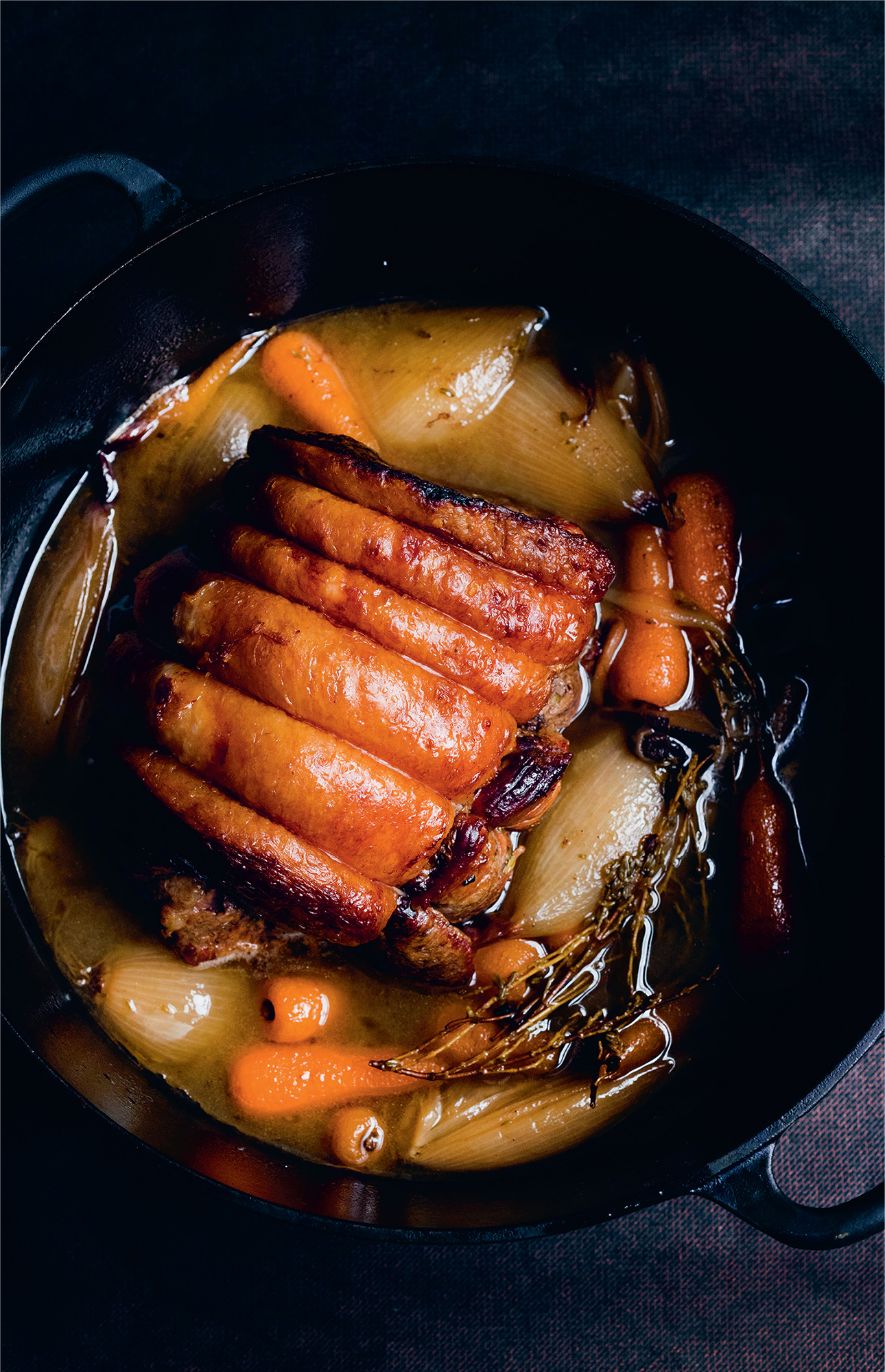
17 NOVEMBER
Pork and panforte
Just as I might eat a wedge of butter-soft panettone with shudderingly bitter coffee on a winter’s morning, or break a marzipan-scented slice of stollen after an afternoon spent sweeping up leaves in the garden, I too get a fancy for a tiny triangle of chewy panforte. Looking forward to the gentle slap of sweet spice as much as I do that of Lebkuchen or gingerbread, I am more than a little ashamed that I had yet to warm to its honeyed tone when I visited its rust-red hometown, Siena. With hindsight, I probably thought the slim, white packages piled high in every shop were soap.
Night-time, after dinner, is when this treat comes out in our house. My version of my parents’ habit of bringing out a box of After Eight mints. Except the mints got more takers. The chewy disc of nuts and dried figs, honey and spice is best consumed in a room glowing with candlelight and served in a tiny wedge at the foot of a small glass of equally glowing vin santo. To eat it straight from its white paper wrapper in daylight is to indulge only in its curiously chewable compounded figs and nuts. You need a certain sense of occasion to understand its charm, which is probably why it only really comes out at Christmas. Much the same could be said of advocaat.
Panforte has been made in Siena for centuries. Think of it as compressed fruit cake. And made to a secret recipe. I can’t imagine anything like as much gets eaten as is brought back in suitcases. Tradition has it that panforte must be made of seventeen ingredients, one for each of the small districts, the contrade, of Siena. Panforte means strong bread, referring to the spices in the recipe. Dating from the early thirteenth century, it once contained so much pepper it was known as ‘panpepato’. References to the Crusaders carrying it with them for sustenance are probably true, as it is a compact way of carrying high-energy, imperishable survival food. Like a medieval Kendal mint cake.
Between its compacted icing sugar crust or sheets of snowy rice paper are sugar, honey, hazelnuts, almonds, candied peel, cinnamon, nutmeg, ginger, cardamom, salt, cocoa powder, cloves, dried figs, raisins, flour and occasionally walnuts. Recipes abound – it is a doddle to make despite the everlasting shopping list – and many of them are worth making, but none seem to have quite the same chewy, seed- and nut-laden texture as that commercially made in Siena. There is also something ancient about this shallow, fudge-coloured sweetmeat. As if you are chewing a medieval manuscript.
After all the sweetness, something for dinner that has brightness and spirit, a welcome antidote.
Pork, miso and pickled pears
Strips of pork belly, sold without the bone, will work nicely here. I look for those with plenty of fat to meat. I use white miso for the dressing. Use dark miso if that is what you have, but expect the flavour to be saltier and more intense.
Serves 4
pork belly strips, without bones – 700g
liquid honey – 2 tablespoons
white miso paste – 3 tablespoons
grain mustard – 2 tablespoons
salad leaves – a handful
For the pears:
white wine vinegar – 4 tablespoons
black peppercorns – 8
caster sugar – 1 tablespoon
salt – 1 teaspoon
pears – 2
Put the vinegar, black peppercorns, caster sugar and salt into a saucepan with 100ml of water and bring to the boil. Peel the pears, halve them, then cut out the cores with a teaspoon. Lower the pears into the pickling liquid, lower the heat and leave the pears to cook until tender to the point of a knife. Remove from the heat, cover with a lid and leave to rest. Set the oven at 200°C/Gas 6.
Place the strips of pork on a shallow grill pan, season with salt and black pepper, and roast for thirty minutes, until golden and sizzling. In a large shallow pan, warm the honey, white miso paste and mustard until you have a thick paste.
Tear the pork into short, finger-width strips, then toss with the hot dressing. Return the dressed meat to the oven for seven to ten minutes, until the surface is sizzling and starting to caramelise. Wash and dry the salad leaves and place them on a serving plate, then pile the pieces of hot pork on top. Place half a pickled pear on each plate.
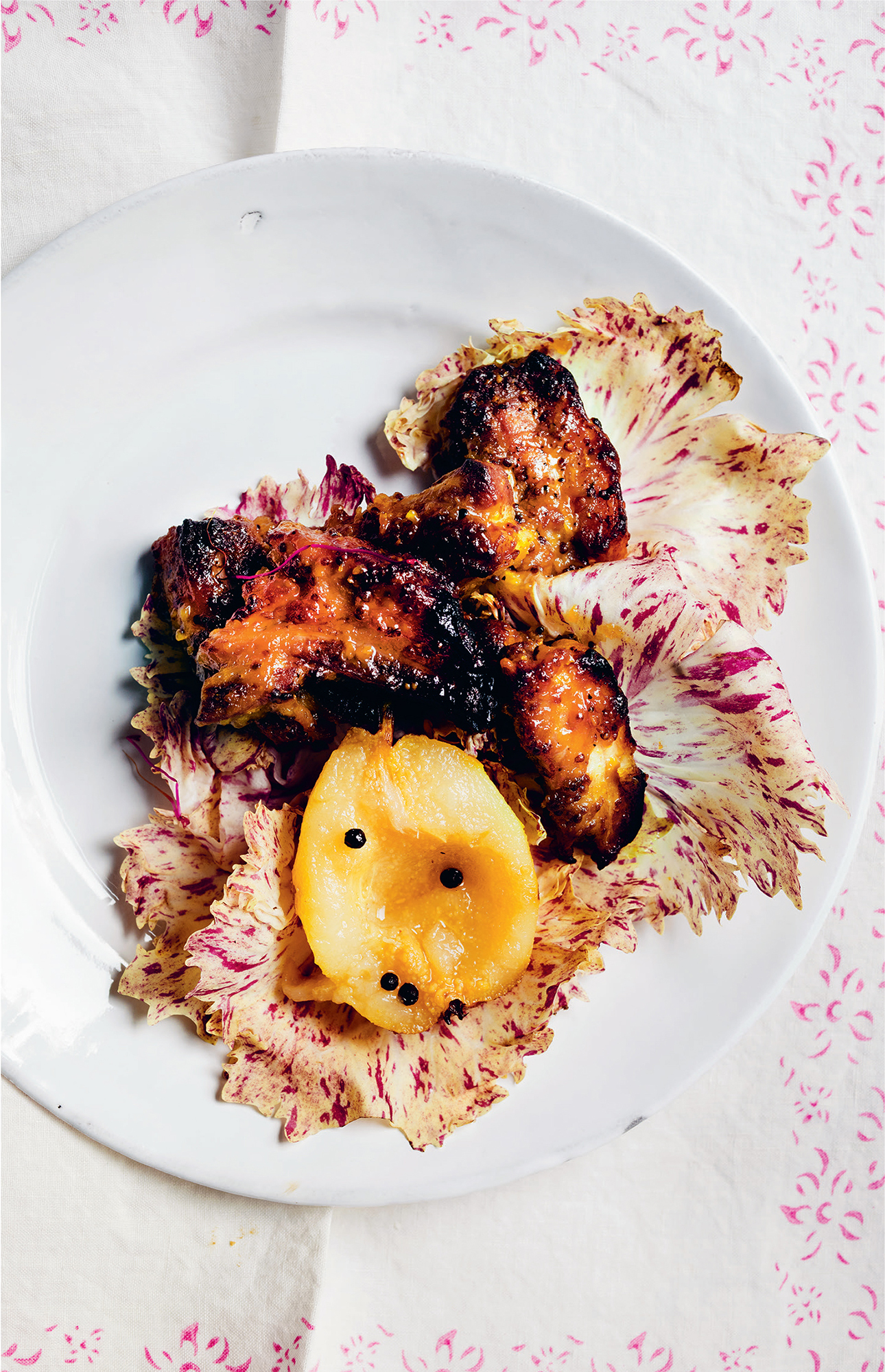
Toasted mincemeat sandwich
I am not going to make my own panforte. That would feel a bit like doing something just to prove you can. The stuff in the shops, straight from Siena, is what the Italians eat. And if it’s good enough for them…
Instead, James has an idea to make a mincemeat-stuffed panettone, the soft cake sliced and stuffed with mincemeat, then toasted. We eat it, slightly too hot for everyone’s lips, with vanilla ice cream. A jug of old-fashioned double cream would no doubt have hit the spot too.
mincemeat – 10 heaped tablespoons
panettone – 2 thick slices, 2cm thick, from an 18cm diameter cake
butter – 40g
icing sugar – 2 tablespoons
Warm the mincemeat in a small saucepan, stirring regularly. Place a slice of panettone on the work surface. Cover it with the mincemeat, then place the second piece on top and press gently to make a large, round sandwich.
Melt the butter in a small, non-stick frying pan. Place the sandwich in the pan and let it cook over a low heat for two minutes, checking the underside is turning gold by lifting it occasionally with a palette knife. As soon as it smells warm and buttery and the underside is golden and toasted, place a plate over the pan, turn the pan and plate over, firmly and confidently, let the sandwich turn out on to the plate, then slide it back into the pan to cook the underside.
Lift out, dust with icing sugar and cut, cake-like, into slices.
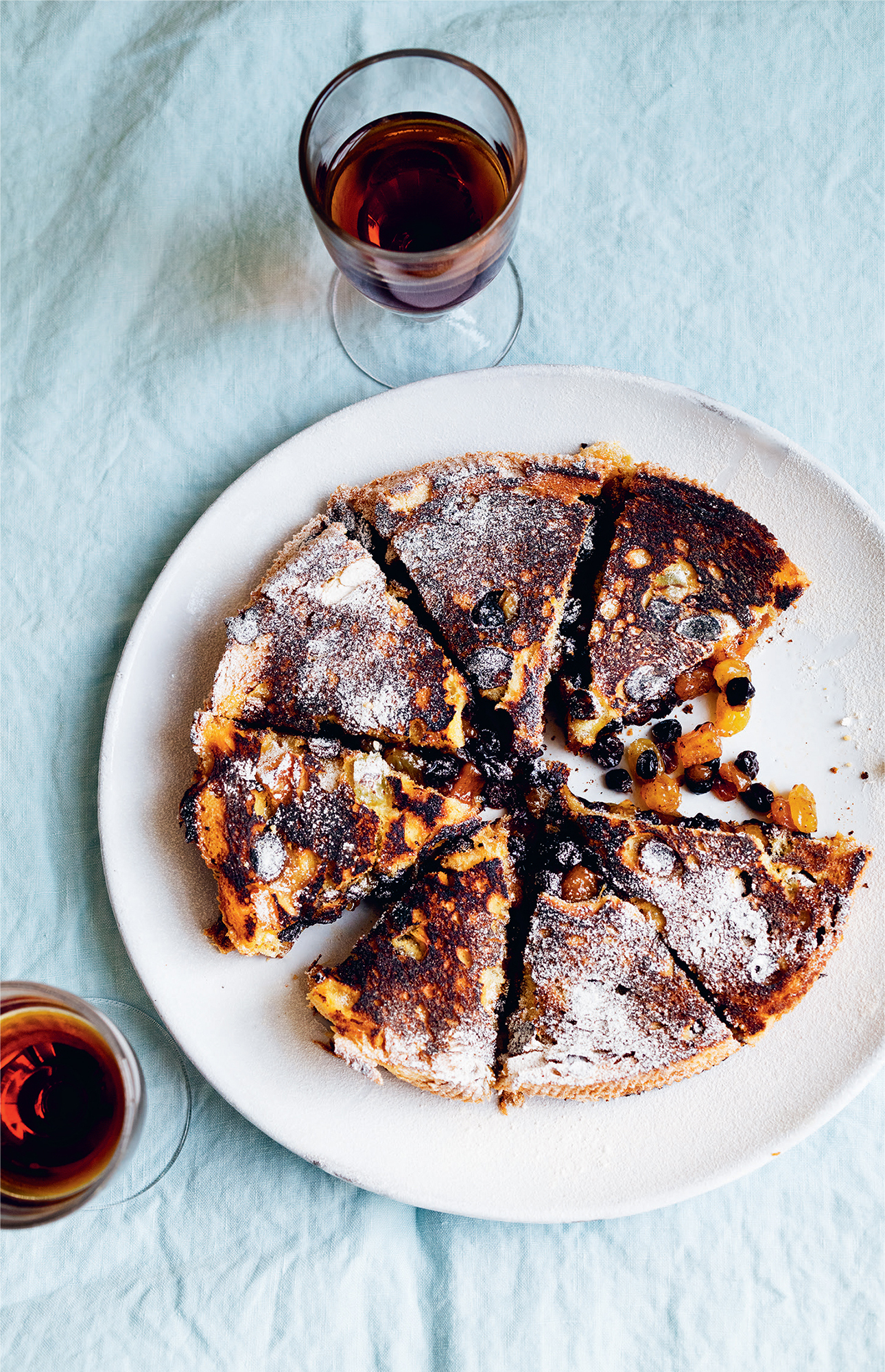
18 NOVEMBER




